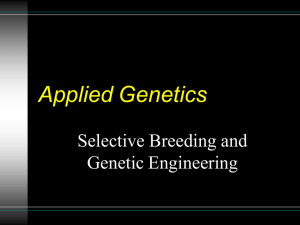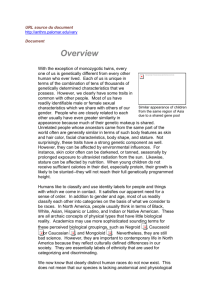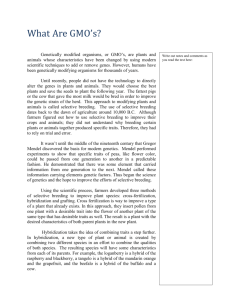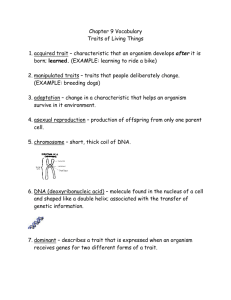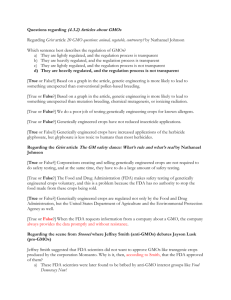Annotating the article Highlight or underline important/key points
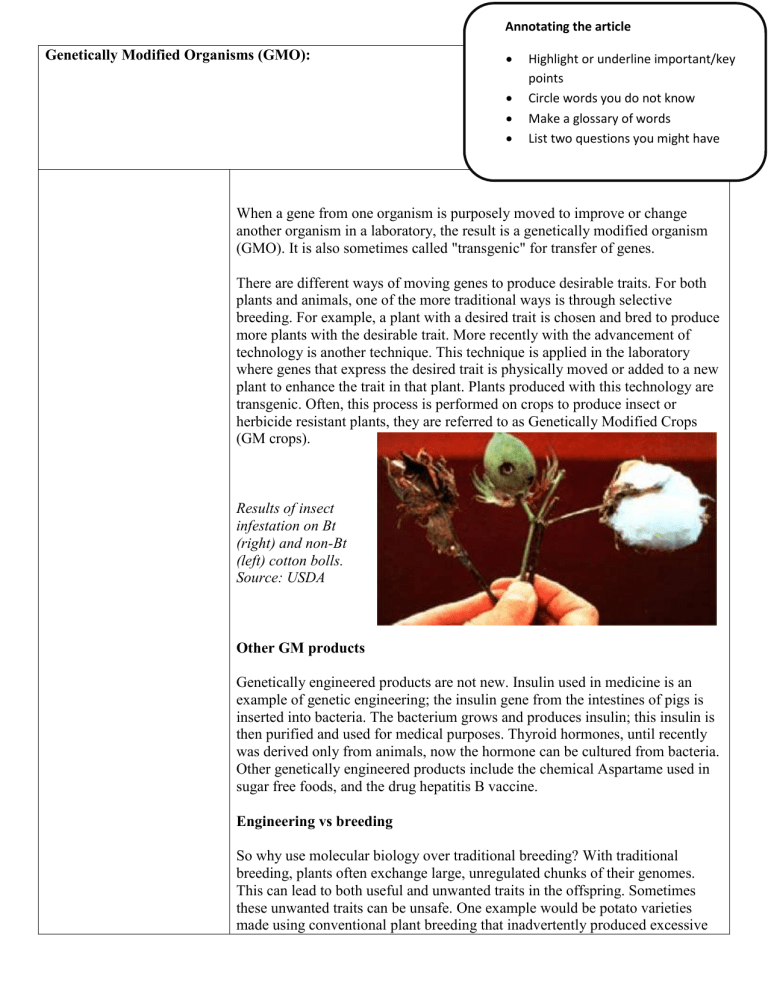
Genetically Modified Organisms (GMO):
Annotating the article
Highlight or underline important/key points
Circle words you do not know
Make a glossary of words
List two questions you might have
When a gene from one organism is purposely moved to improve or change another organism in a laboratory, the result is a genetically modified organism
(GMO). It is also sometimes called "transgenic" for transfer of genes.
There are different ways of moving genes to produce desirable traits. For both plants and animals, one of the more traditional ways is through selective breeding. For example, a plant with a desired trait is chosen and bred to produce more plants with the desirable trait. More recently with the advancement of technology is another technique. This technique is applied in the laboratory where genes that express the desired trait is physically moved or added to a new plant to enhance the trait in that plant. Plants produced with this technology are transgenic. Often, this process is performed on crops to produce insect or herbicide resistant plants, they are referred to as Genetically Modified Crops
(GM crops).
Results of insect infestation on Bt
(right) and non-Bt
(left) cotton bolls.
Source: USDA
Other GM products
Genetically engineered products are not new. Insulin used in medicine is an example of genetic engineering; the insulin gene from the intestines of pigs is inserted into bacteria. The bacterium grows and produces insulin; this insulin is then purified and used for medical purposes. Thyroid hormones, until recently was derived only from animals, now the hormone can be cultured from bacteria.
Other genetically engineered products include the chemical Aspartame used in sugar free foods, and the drug hepatitis B vaccine.
Engineering vs breeding
So why use molecular biology over traditional breeding? With traditional breeding, plants often exchange large, unregulated chunks of their genomes.
This can lead to both useful and unwanted traits in the offspring. Sometimes these unwanted traits can be unsafe. One example would be potato varieties made using conventional plant breeding that inadvertently produced excessive
levels of naturally occuring glycoalkoloids. These glycoalkoloids cause cause gastrointestinal, circulatory, neurological and dermatological problems associated with alkaloid poisoning.
Breeders sometimes have to cross many plants over multiple generations to produce the desired trait. GM techniques allow new traits to be introduced one at a time without complications from extra genes and extensive crossbreeding.
GM techniques also allow traits from different organisms to be applied, such as pest resistance.
Types of GM plants
Most GM crops grown today have been developed to resist certain insect pests.
There are GM plants being developed today to produce specific vitamins, resist plant viruses and even produce products for medical uses. Countries that grow
GM crops include; Argentina, Australia, Canada, China, Germany, India,
Indonesia, Mexico, Portugal, South Africa, Spain, United States, Ukraine, and many more.
Answer the following questions
1.
What is the tone of the article?
__________________________________________________________________________________________
__________________________________________________________________________________________
__________________________________________________________________________________________
2.
What is the author suggesting about GMOs
__________________________________________________________________________________________
__________________________________________________________________________________________
__________________________________________________________________________________________
3.
What is the article trying to explain?
__________________________________________________________________________________________
__________________________________________________________________________________________
__________________________________________________________________________________________
4.
What is the controversy surrounding GMO’s?
__________________________________________________________________________________________
__________________________________________________________________________________________
__________________________________________________________________________________________

